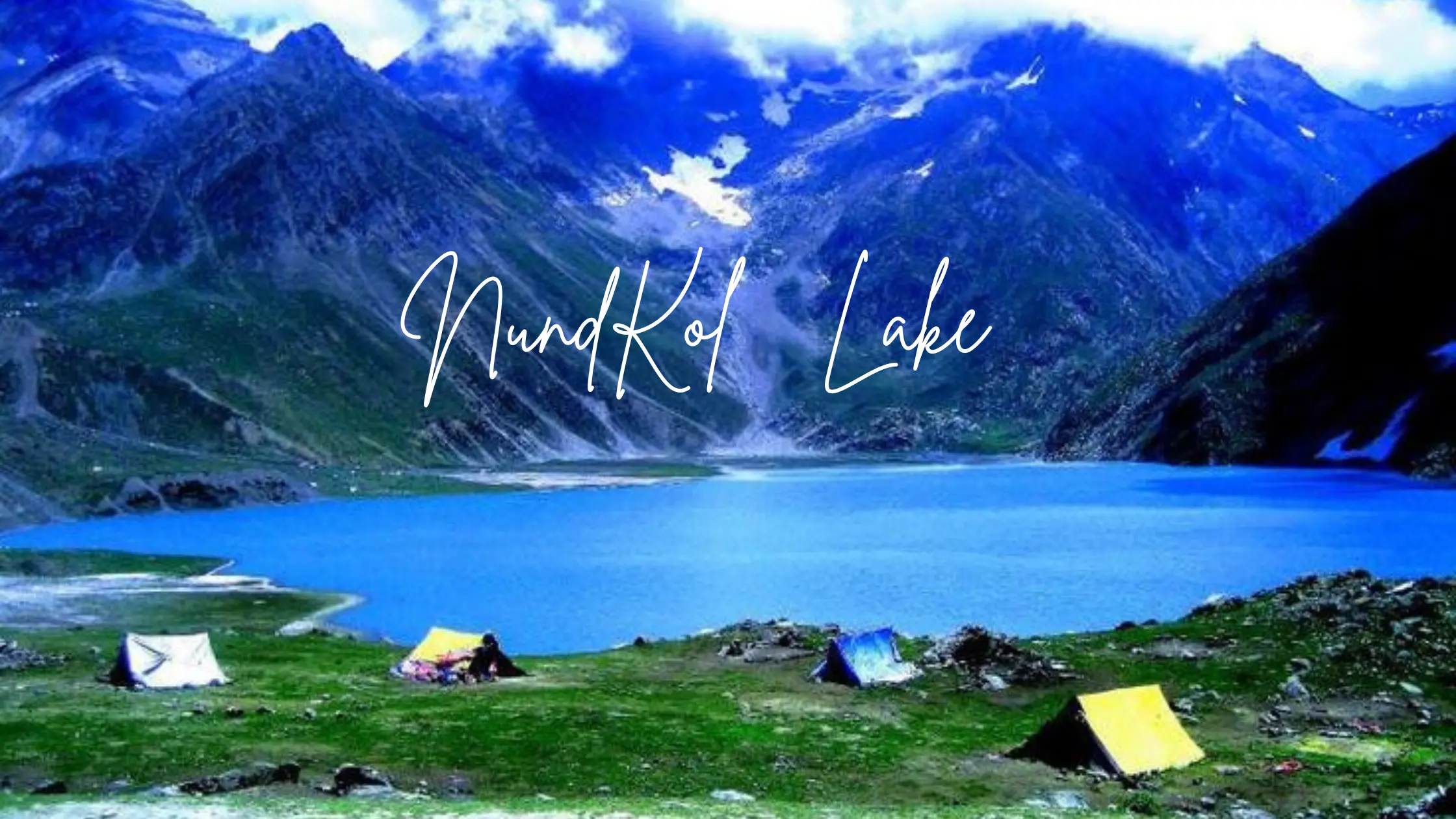Tso Moriri , Tarsar and Marsar Lakes are the beauty of South india to visit. For both nature enthusiasts and tourists, India’s lakes provide an amazing range of scenery and experiences. A small number of lakes are distinctive in their ecological features, despite the fact that many are renowned for their natural attractiveness. Among these, oligotrophic lakes are notable for having crystal-clear waters due to their low nutrient content. These lakes, which are devoid of overgrown vegetation or algae, produce a pure and captivating setting that is not only esthetically beautiful but also a unique and priceless natural treasure.
Gadsar Lake – The Hidden Gem of Jammu Kashmir
At 12,500 feet in the Himalayas, Gadsar Lake is one of the most serene and stunning lakes in Jammu & Kashmir. Gadsar, also referred to as the “Lake of Flowers,” is a popular destination for nature enthusiasts and photographers due to its vibrant wildflower meadows throughout the summer. The Lake is ideal for young tourists looking for serene surroundings, unanticipated adventure, and natural beauty. Just as fascinating as the lake itself is the trip to get there. The Great Lakes Trek, who passes through one of New Zealand’s most picturesque regions, is challenging but well worth the effort. The lake is a component of the trip. With its snow-capped mountains, verdant meadows, cascading streams, and stunning lakes, this excursion awes its audience. Gadsar Lake is an amazing sight for both experienced hikers and novice explorers.

NundKol – The High-Altitude Lake
Nund Kol is a holy alpine lake in the upper elevations of Jammu and Kashmir, sometimes referred to as Nandi Kund or Kalodaka Lake. Nund Kol is a spiritual location as well as a natural wonder that is revered by the inhabitants, particularly Hindus. The lake is an even more captivating location in the summer when alpine flowers blossom all around it. Nund Kol is a must-see location because of its spiritual significance and natural beauty. Additionally, tourists who like fishing can engage in their pastime here, however access to its waters requires an angling license.

Tso Moriri – The Majestic Mountain Lake
Travelers are welcome to discover peace and quiet amidst gorgeous mountains in Tso Moriri, a breathtaking haven of natural beauty. Everyone who visits is enthralled by the captivating view created by its crystal-clear waters reflecting the nearby peaks.
In addition, this lake is a haven for birdwatchers, drawing a wide variety of migrating bird species to its shores in the summer. Visitors can find comfort in the symphony of nature here, among the peaceful vastness, as the subtle rustle of the breeze blends with the calls of diverse avian species.
The following factors contribute to this lake’s increased fame:
1. Wildlife While Camping
2. Observing birds and taking pictures
3. Stargazing at night
Pangong Lake – The Scenic Beauty
Since “Tso” is the Tibetan term for a grassland lake, the lake’s original name was Pangong Tso. India owns one-third of the lake, while China owns the remaining portion.
Until 2009, a significant portion of the Indian populace was unaware about Pangong Lake. The well-known Aamir Khan film “3 Idiots” came out in that year. The movie’s last scene was filmed at this lake. Since then, Pangong Lake’s fame has spread throughout the nation, and almost every Indian traveling to Ladakh must see “the 3 Idiots Lake.”
Also read: “Tso Moriri, Tarsar and Marsar Lakes, and Beyond Surging with Pristine Beauty and Boosting Eco Tourism, India’s Oligotrophic Lakes Await Adventurers in 2025”
Pangong Lake and the surrounding area now faces additional infrastructure and ecological balance issues due to the region’s growing tourism. Like so many other locations across the nation, I hope the local government will maintain control over the area and prevent it from becoming overly crowded.
This lake was constructed by Sheshnag himself, according to Hindu legend. Thus, it is thought to be his home. It is reported that a deep mountain-lined groove was created at the location by cloud bursts in the past. A lake was created when the snow on these mountains gradually melted and the water moved into the deep groove.
Twin Sisters of the Kashmir Valley – Tarsar and Marsar Lakes
The almond-shaped Tarsar Lake, also known as Tar Sar, is an alpine lake in the Kashmir Valley, more precisely in the Aru region of the Anantnag district of Jammu and Kashmir. It is oligotrophic, meaning it produces few algae due to low primary productivity, but it has high-quality drinking water. The same is true of Marsar Lake, who is renowned for its breathtaking scenery. Although a 13,000-foot mountain separates the two bodies of water, the lakes are frequently referred to as twin sisters since they have similar features and are so close to one another. After Yusuf Shah Chak, the monarch of Kashmir in the 16th century, described the twin lakes in a sonnet to his beloved, they were known by this name.
It is well known that Tarsar Lake’s waters change color during the day, ranging from turquoise green to a variety of blue tones. Mountains, snow-capped summits, and countless meadows with conifer trees are scattered throughout it. When viewed from above, Marsar Lake is thought to have a beautiful appearance. The rocky terrain surrounds the lake, which is covered in clouds, and the blue water makes it appear remarkable and lovely, especially to outdoor enthusiasts.
The locals have circulated terrifying myths about Marsar, including the possibility of a catastrophic deluge if someone pollutes its pristine waterways, which has led to the area’s ban on camping.
Key Highlights:
- Beautiful, glistening water that is perfect for nature lovers and photographers
- High-elevation destinations ideal for adventurous travel
- Sacred lakes that combine spiritual importance with scenic beauty
- Growing interest in ecotourism and environmentally friendly travel options
Considering these considerations, India’s oligotrophic lakes are poised to draw tourists seeking both peace and adventure in 2025 and beyond.
